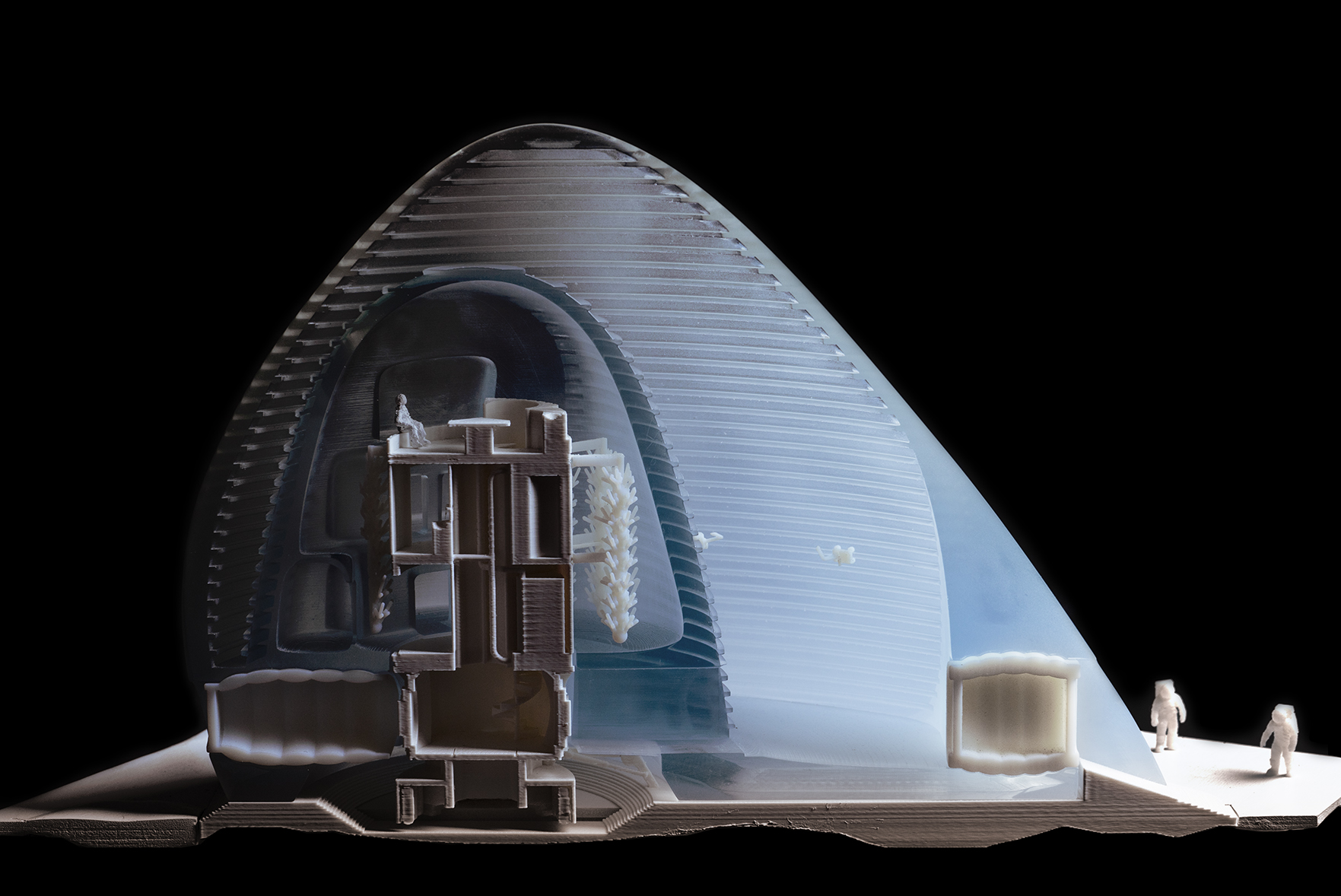Mars Ice House
3D printed Martian Ice Shelter Concept
client: NASA
my role/scope: architectural design (in collaboration with SEArch and Clouds AO)
type: freelance
my role/scope: architectural design (in collaboration with SEArch and Clouds AO)
type: freelance
The solar system is awash with water. From Jovian Europa to Saturnian Enceladus, from the Kuiper belt to the asteroid belt, most planetary bodies in our home solar system feature water in high percentages and quantities. On Mars, more than five million cubic kilometers of water ice have been identified - enough to cover the planet to a depth of thirty five meters. Mars Ice House taps into this vast supply of water ice to propose an autonomously 3D printed habitat for four explorers. On September 27th, 2015, the project was awarded first place in Phase 1 of NASA's 3D Printed Habitat Challenge.











Project Team
Clouds Architecture Office
Ostap Rudakevych
Masayuki Sono
Yuko Sono
Jeffrey Montes
Space Exploration Architecture
Christina Ciardullo
Kelsey Lents
Michael Morris
Melodie Yashar
Ostap Rudakevych
Masayuki Sono
Yuko Sono
Jeffrey Montes
Space Exploration Architecture
Christina Ciardullo
Kelsey Lents
Michael Morris
Melodie Yashar
Consultants
Jared W. G. Atkinson; Planetary Geophysics, MIT
Asmbld Construction Robotics: Petr Novikov, Yaz Khoury
Maria Banks PhD, Geology and Planetary Scientist, Planetary Sciences Institute
Kim Binstead PhD, Associate Professor, ICS Depatment, University of Hawaii
Casey J. Handmer PhD, Applied Mathematics, California Institute of Technology
Stefan Harsan Farr, Engineer and Software Architect
Jeffrey H. Hoffman PhD, Professor of Practice of Aerospace Engineery, MIT Department of Aeronautics and Astronautics
Norbert Koemle PhD, Geophysics, Austrian Academy of Sciences, Space Research Institute
Leslie E. Robertson Associates: Elias E. Matar, Edward Roberts, N. Brent Chancellor
Javier Roa, Orbital Mechanics/Aerospace Engineering, Technical University of Madrid and JPL Research Associate
Pavlo Rudakevych, Roboticist, Aerospace Engineer, Aviator
Markus Scheucher, Physics and Space Sciences, Karl Franzens University of Graz
Asmbld Construction Robotics: Petr Novikov, Yaz Khoury
Maria Banks PhD, Geology and Planetary Scientist, Planetary Sciences Institute
Kim Binstead PhD, Associate Professor, ICS Depatment, University of Hawaii
Casey J. Handmer PhD, Applied Mathematics, California Institute of Technology
Stefan Harsan Farr, Engineer and Software Architect
Jeffrey H. Hoffman PhD, Professor of Practice of Aerospace Engineery, MIT Department of Aeronautics and Astronautics
Norbert Koemle PhD, Geophysics, Austrian Academy of Sciences, Space Research Institute
Leslie E. Robertson Associates: Elias E. Matar, Edward Roberts, N. Brent Chancellor
Javier Roa, Orbital Mechanics/Aerospace Engineering, Technical University of Madrid and JPL Research Associate
Pavlo Rudakevych, Roboticist, Aerospace Engineer, Aviator
Markus Scheucher, Physics and Space Sciences, Karl Franzens University of Graz
Special Thanks
Dr. Ron Turner, ANSER Distinguished Analyst
Lawrence W. Townsend PhD, Chancellor's Professor of Nuclear Engineering, University of Tennessee
Lawrence W. Townsend PhD, Chancellor's Professor of Nuclear Engineering, University of Tennessee